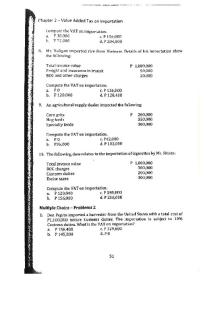Ccrn notes 3 PDF

| Title | Ccrn notes 3 |
|---|---|
| Author | Anonymous User |
| Course | Physical Assessment, Health Examination, & Documentation Practices For The Professional Nurse |
| Institution | Middle Georgia State University |
| Pages | 1 |
| File Size | 61.1 KB |
| File Type | |
| Total Downloads | 30 |
| Total Views | 145 |
Summary
CCRN/Evolve notes...
Description
System Breakdown A. Cardiovascular (20%) B. Pulmonary (18%) C. Endocrine (5%) D. Hematology/Immunology (2%) E. Neurology (12%) F. Gastrointestinal (6%) G. Renal (6%) H. Multi-system (8%) I. Behavior & Psycho-social 4%
Arteries are afterload and afterload is pressure…….veins are volume Sinus dysrhythmia or arrhythmia occurs as a result of changes in ventricular filling and therefore preload caused by breathing. The clues in the stem are global bleeding and sepsis. This patient has a hematologic failure rather than a hepatic failure. Hepatic failure will increase PT and PTT, but it generally will not affect the platelets. Eliminate option "hepatic failure." SIRS may cause DIC, but it alone will not cause the clinical picture given. Eliminate option "systemic inflammatory response syndrome (SIRS)." D5W is an isotonic solution while in the bottle, but when it is administered, the dextrose is quickly metabolized, leaving free water. The patient in this case has indications of diabetes insipidus. Patients with diabetes insipidus lose more water than sodium, and they need to be treated with more water than sodium. Saline and lactated Ringer solution would contribute to the hypernatremia. D10W could cause a hypertonic diuresis. Look for something with water because you know that water is what your patient is losing. The high concentration of dextrose in D10W potentially would contribute to water loss by causing an osmotic diuresis, so eliminate D10W. Hyperkalemia increases gastric motility, causing diarrhea. Hyperkalemia also causes flaccid paralysis by partially depolarizing the muscle cell membrane, preventing further depolarization. "Premature ventricular contractions and paralytic ileus" is seen in hypokalemia; "Hypotension and respiratory muscle paralysis" is seen in hypermagnesemia; and "Stridor and paresthesias" is seen in hypocalcemia. Rejection would cause the blood urea nitrogen and creatinine to go up, but the sodium would be normal or decreased because of water retention. Heart failure would stimulate aldosterone and retention of sodium and water, so the sodium would be normal but the patient would be fluid overloaded. Nothing is in the case presentation to make you believe that she has been consuming abnormal amounts of sodium. Knowing that post-transplant patients are taking immunosuppressive agents, including corticosteroids, leads you to "Corticosteroid therapy" option. These findings indicate that the body is holding onto sodium and water. The BUN/creatinine ratio of greater than 10:1 is seen in dehydration (prerenal) or catabolism. The increase in urine specific gravity is indicative of dehydration, and dehydration is the most significant cause of prerenal acute kidney injury. Calcium imbalances are caused by acid–base imbalances (e.g., ionized calcium decreases in alkalosis)...
Similar Free PDFs

Ccrn notes 3
- 1 Pages

Ccrn test prep - Lecture notes 1-11
- 135 Pages

Laura Gasparis CCRN Review
- 37 Pages

Notes#3 - Lecture 3 notes
- 49 Pages

3 - Lecture notes 3
- 7 Pages

Notes 3
- 14 Pages

Unit-3-Notes - Lecture notes 3
- 12 Pages

Notes 3
- 36 Pages

Notes 3
- 4 Pages

Chapter 3 - Lecture notes 3
- 1 Pages

Chapter 3 - Lecture notes 3
- 30 Pages

Chap 3 - Lecture notes 3
- 4 Pages

CIV1000 - 3 - Lecture notes 3
- 4 Pages

Chapter 3 - Lecture notes 3
- 6 Pages

Chapter 3 - Lecture notes 3
- 6 Pages
Popular Institutions
- Tinajero National High School - Annex
- Politeknik Caltex Riau
- Yokohama City University
- SGT University
- University of Al-Qadisiyah
- Divine Word College of Vigan
- Techniek College Rotterdam
- Universidade de Santiago
- Universiti Teknologi MARA Cawangan Johor Kampus Pasir Gudang
- Poltekkes Kemenkes Yogyakarta
- Baguio City National High School
- Colegio san marcos
- preparatoria uno
- Centro de Bachillerato Tecnológico Industrial y de Servicios No. 107
- Dalian Maritime University
- Quang Trung Secondary School
- Colegio Tecnológico en Informática
- Corporación Regional de Educación Superior
- Grupo CEDVA
- Dar Al Uloom University
- Centro de Estudios Preuniversitarios de la Universidad Nacional de Ingeniería
- 上智大学
- Aakash International School, Nuna Majara
- San Felipe Neri Catholic School
- Kang Chiao International School - New Taipei City
- Misamis Occidental National High School
- Institución Educativa Escuela Normal Juan Ladrilleros
- Kolehiyo ng Pantukan
- Batanes State College
- Instituto Continental
- Sekolah Menengah Kejuruan Kesehatan Kaltara (Tarakan)
- Colegio de La Inmaculada Concepcion - Cebu
